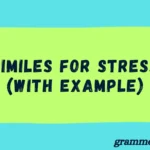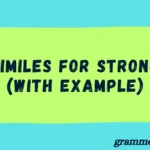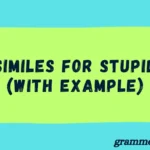When people talk about communication, marketing, or even daily conversations, two words come up repeatedly: content and context. At first glance, they sound similar. Yet the difference between them shapes whether your message lands effectively or misses the mark.
Think of content as what you say and context as how, when, and where you say it. Both are inseparable. Strong content without context falls flat, and the right context with weak content is equally ineffective.
In this guide, we’ll break down what content really means, what context adds to it, how they differ, and—most importantly—how you can master the balance for impact communication.
What is Content?
Content is the actual message you create or share. It’s the words, images, videos, graphics, and sounds that form the “what” in any communication. Whether you’re writing an article, posting on social media, creating a marketing campaign, or giving a speech, your content is the piece of information you put forward.
Key Characteristics of Content
- It conveys information. Content delivers facts, ideas, or stories.
- It can take many forms. Articles, blog posts, infographics, podcasts, videos, or memes.
- It serves a purpose. Some content educates, some entertains, others persuade or inspire.
Types of Content
- Text-based: Articles, blog posts, guides, ebooks.
- Visual: Infographics, photography, illustrations.
- Audio: Podcasts, interviews, sound clips.
- Video: Tutorials, product demos, vlogs.
- Interactive: Quizzes, polls, tools, games.
Example of Strong Content
A blog post that solves a specific problem—like “How to Fix a Slow Laptop in 5 Steps”—with actionable advice, clear formatting, and visuals.
Example of Weak Content
A vague social media post that says “Check this out!” without offering value, clarity, or relevance to the audience.
What is Context?
If content is the message, then context is the environment that surrounds that message. It includes the circumstances, audience, timing, culture, and even emotional state in which communication happens.
Key Elements of Context
- Audience: Who is receiving the message?
- Time and Place: When and where is the message shared?
- Cultural Background: What norms, values, or expectations shape interpretation?
- Platform or Channel: Social media, classroom, workplace, or personal conversation.
- Situation: What is happening before and after the message is delivered?
Why Context Matters
Without context, content risks being misunderstood or ignored. The same sentence can mean very different things depending on tone, timing, and environment.
Examples of Context
- Positive: A heartfelt “Congratulations!” at a graduation ceremony.
- Negative: The same “Congratulations!” said sarcastically after someone makes a mistake.
Quote: “Words mean more than what is set down on paper. It takes the human voice to infuse them with deeper meaning.” – Maya Angelou
Content vs Context: Key Differences
While they’re interconnected, content and context are not the same. The easiest way to grasp the distinction is to compare them side by side.
| Aspect | Content (What) | Context (Why, Where, When, How) |
| Definition | The actual message—words, visuals, media. | The circumstances and environment shaping meaning. |
| Focus | Information or material being shared. | Relevance and interpretation of that material. |
| Example | A blog post on healthy eating. | Whether it’s read by athletes, parents, or patients influences how it’s understood. |
| Question Asked | What is being said? | Why, how, when, and where is it being said? |
Analogy
Think of content as a script in a play. Without context—the stage, lighting, actors, and audience—the script alone doesn’t create the experience.
How Content and Context Work Together
Great communication requires both content and context. You can’t rely on one without the other.
When Content Works Without Context
A company posts a polished video advertisement (great content), but launches it right after a tragic event. The timing makes it appear tone-deaf, leading to backlash.
When Context Works Without Content
A brand picks the perfect moment to engage its audience (great context), but the message is vague or meaningless. It fails to capture attention.
Case Study: Pepsi’s 2017 Ad Backlash
Pepsi launched an ad featuring Kendall Jenner handing a police officer a can of soda during a protest. The content was visually striking, but the context was insensitive. It trivialized serious social justice issues. The result? Public outrage and a withdrawn campaign.
Case Study: Nike’s “You Can’t Stop Us” Campaign
Nike’s 2020 campaign used split-screen editing to show athletes across different sports, races, and abilities moving in sync. The content was powerful, but the context—released during global conversations about equality and resilience—made it unforgettable.
Practical Applications of Content and Context
Understanding how content and context interact helps across many fields.
In Marketing
- Content: A video tutorial on using a product.
- Context: Posting it during peak shopping season or when customers are actively searching for solutions.
In Education
- Content: A math lesson explaining algebra.
- Context: Delivering it to students who already understand basic arithmetic, in a classroom free from distractions.
In Daily Communication
- Content: “We need to talk.”
- Context: Said by a boss during a casual coffee chat vs in a closed office after a mistake.
Common Mistakes to Avoid
Even experienced professionals trip up when balancing content and context. Here are frequent pitfalls:
- Ignoring audience intent. Creating what you want instead of what your audience needs.
- Overloading with content. Publishing too much information without considering timing or relevance.
- Forgetting cultural nuance. Words or images that work in one culture may offend in another.
- Relying on content alone. Believing great design or clever writing makes up for poor timing.
Best Practices to Balance Content and Context
Mastering the balance means considering both the message and the environment.
Steps to Improve Balance
- Research your audience. Know their needs, interests, and expectations.
- Adapt to the platform. Tailor content differently for LinkedIn, Instagram, or a corporate report.
- Time it right. Post when your audience is active, not just when it’s convenient for you.
- Test and measure. Use analytics, surveys, or feedback loops to understand effectiveness.
- Be culturally aware. Factor in location, traditions, and social climate.
Example:
A fitness brand might create high-energy workout videos (content). To maximize impact, it launches them in January (context), when many people set fitness resolutions.
Conclusion
The difference between content and context isn’t just academic—it’s practical. Content is the message itself, while context is the environment that gives it meaning. Together, they create communication that resonates, persuades, and inspires.
The next time you craft a blog post, presentation, or social media update, don’t just focus on what you’re saying. Ask yourself: Is this the right message, for the right people, at the right time? That’s where content meets context—and that’s where impact happens.
FAQs
What comes first, content or context?
Context usually comes first because it determines what type of content will be most effective for your audience and situation.
Can great content succeed without context?
Rarely. Even the best-written piece fails if it’s delivered at the wrong time or to the wrong audience.
How does context change meaning in communication?
A single sentence can mean encouragement, sarcasm, or criticism depending on timing, tone, and setting.
Why do businesses fail at balancing content and context?
Many focus on producing more content rather than aligning it with audience needs, cultural moments, and delivery channels.
What’s an easy way to evaluate context before sharing content?
Ask three questions: Who’s my audience? What’s happening around them? Is this the right time and place for my message?

Mariah Cannon is the dedicated educator behind GrammerHome.com, committed to making English grammar clear, engaging, and confidence-boosting. With years of teaching experience and a passion for effective communication, Mariah specializes in breaking down complex grammar rules into bite-sized, easy-to-apply lessons.




